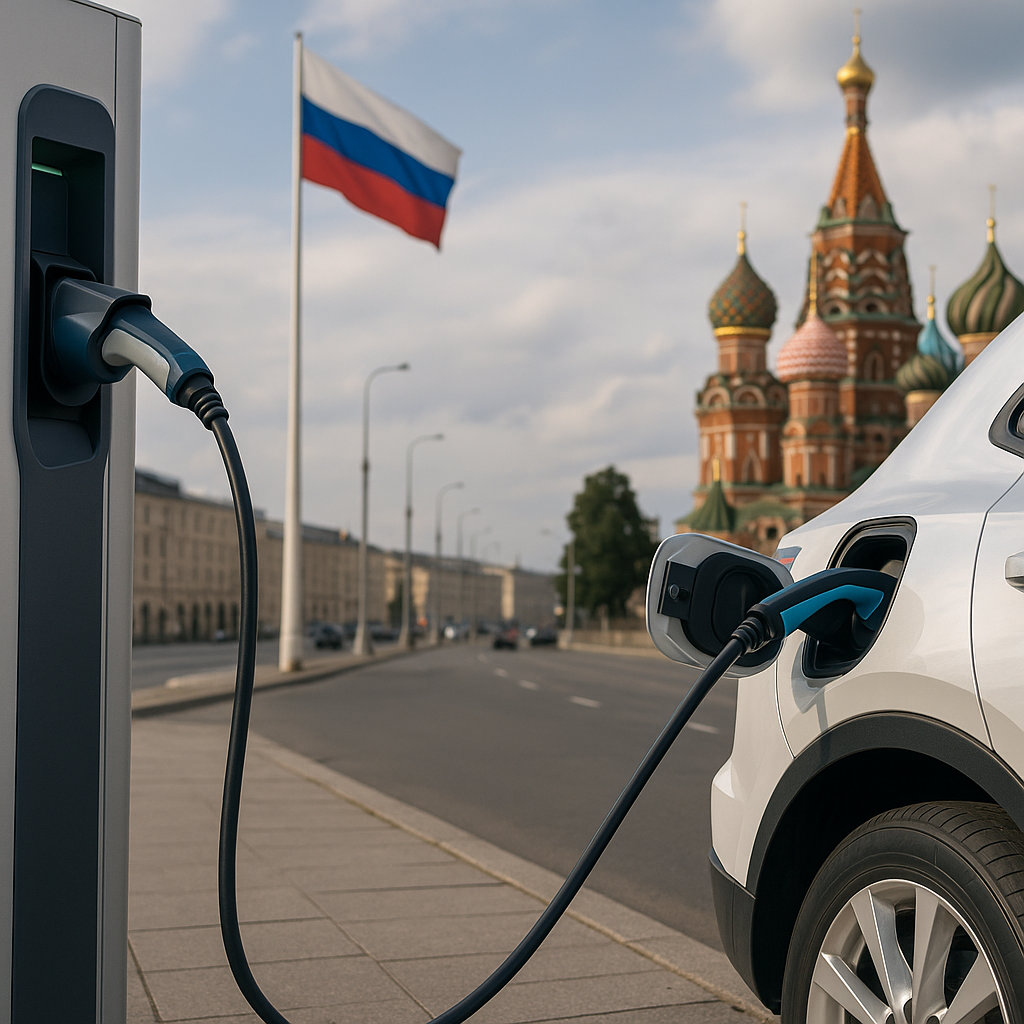While much of the world races ahead in building infrastructure to support electric vehicles (EVs), Russia’s journey has been slower, more complex—and increasingly urgent. As global automakers shift their focus to zero-emission fleets and energy prices fluctuate, Russia faces a pivotal choice: remain reliant on its fossil-fuel legacy or pivot toward electrified mobility. The stakes are high, and the challenges steep, but the momentum is building. Behind the scenes, policy frameworks, pilot projects, and private sector ambitions are setting the stage for an EV-friendly transformation, even if the road is uneven.
National Goals and Federal Strategy: The EV Roadmap to 2030
In 2021, Russia adopted its first federal strategy for the development of electric transport through 2030. It set ambitious goals: 10% of new car sales to be electric by 2030 and over 70,000 public charging stations to be deployed across the country. The program offers subsidies for EV buyers and domestic manufacturers, and grants to companies building infrastructure. While modest compared to EU or Chinese standards, this plan marked a significant shift in national priorities—placing electrification on the Kremlin’s radar.
Geography vs. Infrastructure: The Size Challenge
Russia’s vast geography is a double-edged sword. On one hand, cities like Moscow, St. Petersburg, Kazan, and Sochi have the density and grid capacity to support EV adoption. On the other, the country’s massive land area, harsh climates, and underdeveloped rural infrastructure make full-scale EV rollout daunting. Long distances between cities, limited highway service areas, and power grid limitations in remote regions complicate plans to install fast-charging networks.
Charging Networks: A Nascent Landscape
As of 2024, Russia has fewer than 2,500 public charging points nationwide—a fraction compared to European countries of similar population. Most are concentrated in major urban centers. However, companies like Rosseti, Yandex, and KAMAZ are working to change that. Rosseti’s “Ploshchad Budushchego” initiative plans to install thousands of chargers at shopping centers, parking lots, and highway rest stops. Meanwhile, private networks like Revolta and E-Motion are expanding coverage in regional cities.
Policy Gaps and Regulatory Delays
Despite strategic goals, Russia’s EV infrastructure development suffers from regulatory fragmentation. There is no single federal agency responsible for overseeing the rollout. Standards for connector types, electricity tariffs, and installation procedures vary regionally. In some cities, charging station approval can take months due to unclear zoning laws and utility permissions. This bureaucratic friction slows down private investment and discourages smaller entrepreneurs from entering the space.
Domestic Industry: Between Legacy and Leapfrogging
Russian automakers, including AvtoVAZ, GAZ, and KAMAZ, are gradually entering the EV race, often with state support. KAMAZ’s electric buses are already operating in Moscow and other cities, demonstrating that public transport may be the first successful EV use case. AvtoVAZ has announced plans for an electric Lada by the late 2020s. Yet supply chain issues, limited access to battery-grade lithium, and underdeveloped R&D infrastructure limit progress. Strategic partnerships with China and Central Asia may help Russia leapfrog certain phases of industrial development—but the clock is ticking.
Public Awareness and Cultural Shifts
Public perception is a major hurdle. Many Russians remain skeptical about EVs due to range anxiety, winter performance concerns, and high upfront costs. Moreover, cheap gasoline and diesel reduce the economic incentive to switch. Government information campaigns, visible investments in charging stations, and early-adopter success stories are beginning to shift opinions—especially among younger, tech-savvy urban residents. Car-sharing companies offering EV fleets are also exposing more people to the practicality of electric driving.
Energy Paradox: Oil Giant or Green Future?
As one of the world’s largest oil and gas exporters, Russia finds itself in an energy paradox. On the one hand, fossil fuels remain a core economic pillar. On the other, global decarbonization threatens demand for Russian energy exports. Promoting EV adoption could align Russia with global trends, reduce urban pollution, and foster new industrial sectors. Yet the transition requires balancing powerful incumbent interests with long-term sustainability goals—a political and economic tightrope.
International Influence and Trade Dynamics
Geopolitical shifts are reshaping Russia’s EV calculus. With Western sanctions cutting off access to European markets, Russia is turning toward Asia—particularly China—as a source of EV components, batteries, and finished vehicles. Chinese automakers like Chery and Geely are increasing their presence in the Russian market, offering affordable electric models that can fill domestic gaps. At the same time, trade ties may bring new standards, technologies, and investment flows that accelerate infrastructure development.
Pilot Cities and Green Islands
Certain Russian cities are emerging as “green islands” leading the EV transition. Moscow, for example, boasts over 1,200 electric buses and a rapidly growing charging network. The city’s clean-transport policy includes tax incentives, toll exemptions, and reserved parking for EVs. Kaliningrad and Kazan are testing electrified logistics corridors and smart-charging hubs. These pilot programs offer scalable models—but replicating them nationwide will require political will, funding, and coordination.
Conclusion
Russia’s journey toward an EV-friendly infrastructure is a test of adaptation, ambition, and pragmatism. The country faces unique structural challenges—from geography and bureaucracy to public perception and energy politics. Yet it also holds unique advantages: strong state coordination potential, industrial capacity, and growing partnerships with Asia. If strategies align and infrastructure investments accelerate, Russia could transform from an oil-dependent nation into an active participant in the global electric mobility shift. The engines of change are already running—now it’s time to build the roads that will carry them forward.



russia pumps oil 4 half the world… aint no evs comin soon.
Time gonna show…
russia going ev? haha 😂big changes coming soon!
Well, in Moscow dey is already puttin them chargers in, I guess..